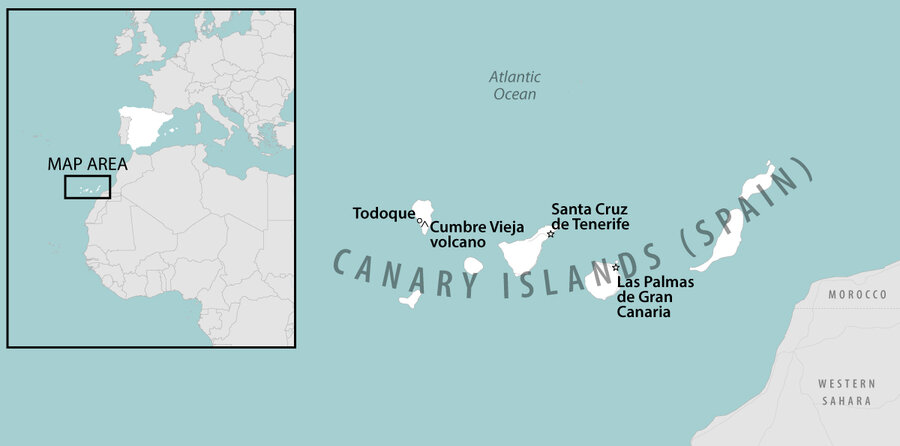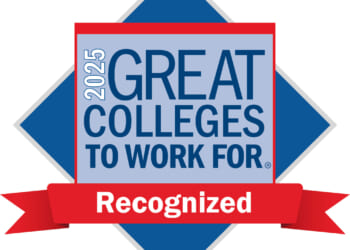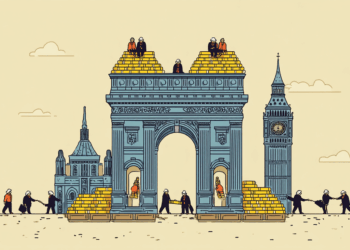The molten rock flattened Audelina Leal’s three-story house, swallowing the wedding photos, letters, and children’s drawings she and her husband, Roberto, had collected over 50 years. All of Todoque’s other 1,500 residents saw their homes destroyed, too.
But it was when the avalanche buried their church – a simple, white-brick structure built in the 1950s – that her understanding of “home” shifted.
“When the church fell, it really felt like the end of something,” says Ms. Leal, today clutching a framed painting of the church that she received as a gift after the volcanic eruption.
Why We Wrote This
Every home in a tiny town on La Palma was destroyed when lava from the Cumbre Vieja volcano poured through it. Residents are among the record numbers of those displaced by disaster globally – and forced to redefine notions of “home.”
The Cumbre Vieja volcano spewed across the island of La Palma, pouring lava into the Atlantic Ocean for three fiery months in 2021. In all, it destroyed 3,000 homes. As the four-year anniversary approaches, residents like the Leals, who have had to move and start anew – they now live on a plateau at the foot of the volcano – are redefining what home means to them.
The Leals are among the increasing number of people – 9.8 million worldwide last year – displaced by weather events and natural disasters. Conflict and violence cause the greatest number of people to flee their homes. But last year, there were nearly twice as many earthquakes, flash floods, wildfires, and similar disasters as the annual average over the previous decade.
The massive acts of private and public reconstruction that follow such events are often considered a pivot toward normalcy. In La Palma, authorities have been rebuilding the coastal highway that was ripped in half when volcanic lava raced down the hillside. Small businesses are reopening their doors. Banana farmers, the island’s economic engine and cultural identity, are starting to replant their crop.
But even when new houses are built, when new photos are hung on walls, and communities start to take shape, residents here say a return home does not mark the end of their disaster story.
Experts don’t have a good definition of “what the end of displacement means” says Christelle Cazabat, head of programs at the Internal Displacement Monitoring Centre in Geneva. “Are you still displaced at heart? Do you belong in this new place? Do you feel like you’re home?”
Prescribing where to rebuild
In many ways, life for the Leals is much the same as it was before the volcano erupted.
Now retired, Mr. Leal tends to his small garden during the morning, watering patches of lettuce and garlic, while Ms. Leal peels potatoes for lunch. They chat with neighbors and enjoy the near-daily sunshine.
But now, instead of living in a semicircle next to their entire family, the Leals and their four adult children live scattered across La Palma. The emblematic Todoque town church, reduced to a pile of hardened rock, is not the only institution that helped knit this community together. The cultural association that brought the town together for social events is gone, too.
The Spanish government offered homeowners compensation of €1,504 ($1,740) for every square meter they lost in compensation. For those with million-euro homes, like the Leals, that came to around €350,000. But the government did not put any special conditions on the aid, and not everyone has used the money to buy a home.
This is part of a larger shift in disaster-relief management over the last half-decade, moving from financial grants that must be spent for specific purposes toward self-reliance and empowerment, experts say. The goal is to resolve the displacement, not create a stopgap solution.
“If you give people agency, they will make good choices,” says Lawrence Huang, a policy analyst at the Migration Policy Institute in Washington. “Otherwise, people become reliant on government aid.”
But here, this has posed a challenge to Todoque’s traditional sense of community. “When people see that sum of money in their bank account in one go, it’s a huge shock,” says Jose Henry Garritano, an architect from Todoque who also lost his home in the eruption and now lives across the road from the Leals.
He is one of more than two dozen architects on the island working to help families invest the government aid in real estate, instead of spending it on a car or vacation. It isn’t easy in a market that has seen housing and land prices shoot up since 2021.
“I feel more like a psychologist than an architect sometimes,” says Mr. Garritano from his office in Los Llanos, the largest municipality on La Palma. “I take people’s hand so they can have their life back – their ‘home sweet home.’”
Living in a ‘garbage can’
Recreating community is complicated by many factors. Not everyone who lost their homes had housing insurance – it’s not a requirement in Spain – so they weren’t eligible for government aid. Many of them have been resettled in temporary housing.
The Canary Islands government built several rows of small wooden chalets on a strip of land near the town of Los Llanos, and another few clusters of white metallic containers, complete with water, electricity, and heating.
As time stretches on, the temporary situation has begun to feel more permanent, as around 100 families are still waiting for the local government to offer them a long-term solution. The containers leak during heavy rains and become scorching hot in the summer, and locals refer to them as contenedores – “garbage cans” in Spanish.
“Every day is better than the day before,” says Javier Llamas, the mayor of Los Llanos. “But it’s really slow in reality.”
Residents of the contenedores are trying to make do. Argensola Pérez, who lives alone at the end of a row of metal shacks, has bought new furniture and tried to spruce up the place with decorations and potted plants.
“Some people here complain that the containers are too small and rundown,” says Ms. Pérez, sitting in an armchair as she takes a break from an evening crossword puzzle. “But I have my own space, my things. What else do I need?”
A feat of engineering
Shortly after the volcano erupted, the local government rebuilt the coastal highway. That has allowed people to get from home to work in larger towns like Los Llanos and find a sense of normalcy.
Reconstructing the town of Todoque will take longer. The government has said it plans to rebuild on the land buried by the volcano. But the lava rock is “still hot enough to melt your shoes if you walk on it,” says Mr. Garritano, the architect. He estimates it could take 10 to 15 years before reconstruction is possible.
The Leals have moved forward, recalibrating their expectations. “Life isn’t what you expect,” says Mr. Leal. “But we can’t look backwards.”
Their new house is only a small one-story, which was all that their government compensation payment would cover. Their once vast yard full of goats and banana trees is now a modest vegetable garden. But most of their new neighbors are the same as those in Todoque, and one of their daughters has decided to build a house across the road.
A photo of their wedding day sits in a gold frame on their mantle – a copy from a friend. And behind the kitchen table, their grandkids have written messages of encouragement on a whiteboard.
“Grandpa and grandma, we love you so much,” says one message. And in the bottom left corner, covered in smiley faces, someone has written in blue marker, “We hope you have a great day!”















